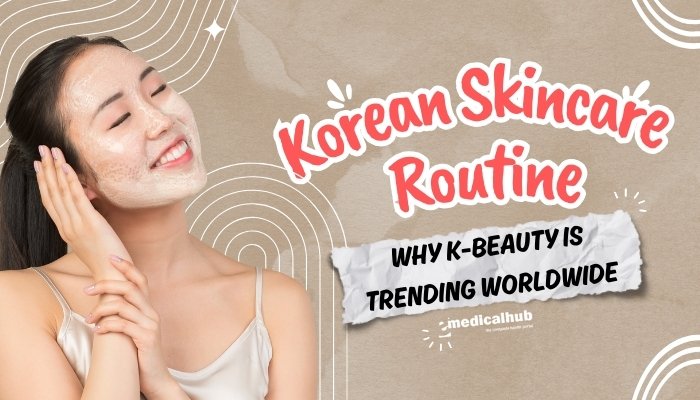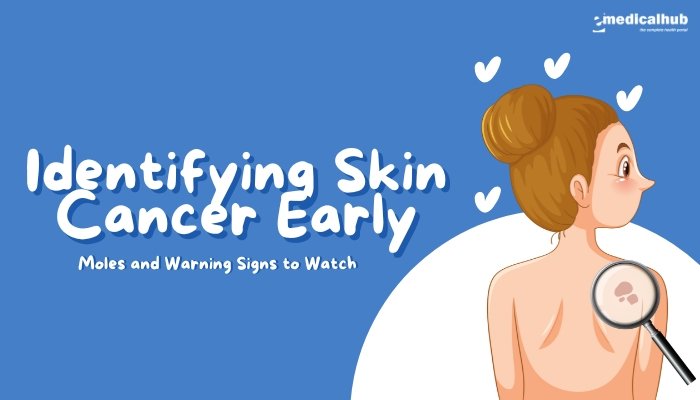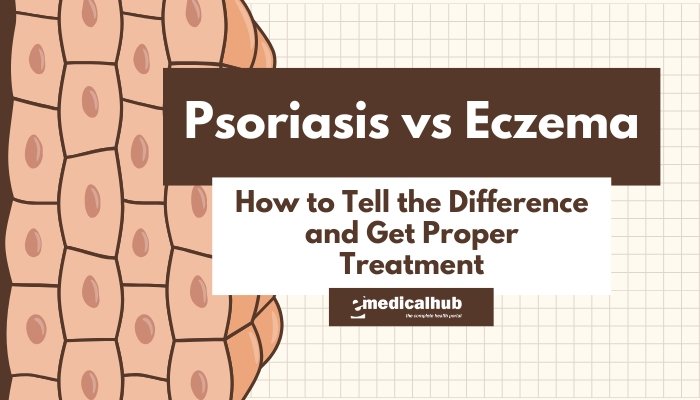Introduction
The global beauty market has experienced a remarkable shift in consumer interest over the past decade, with Korean skincare (often referred to as “K-beauty”) emerging as one of the most influential trends. From its innovative products to its multi-step regimens emphasizing gentle, layered care, K-beauty has gained a devoted international following among people seeking to achieve radiant, healthy-looking skin.
Whether it’s the promise of “glass skin,” the abundance of unique natural ingredients, or the meticulous approach to skin health, Korean skincare has set new standards in beauty practices worldwide.
In this article, we dive into the core principles of the Korean skincare routine, explaining each step’s significance and exploring why K-beauty has become a cultural phenomenon. We’ll look at how traditions, R&D, and consumer needs shaped the approach, dissecting how multi-functional products, mild formulations, and creative packaging captured hearts globally.
By understanding the depth of Korean skincare, enthusiasts can better customize routines that meet individual needs and preferences—and possibly gain new insights into balanced, holistic skincare philosophies.
Disclaimer: This content is for informational use only. Although the skincare methods described are popular, results can differ across skin types and personal circumstances. If you have concerns about specific skin issues, consult a qualified dermatologist or healthcare provider for personalized advice.
The Foundations of K-Beauty
Historical and Cultural Context
Skincare and beauty have long held cultural importance in Korea, with roots in herbal remedies and traditional medical practices dating back centuries. The notion of “your face reflecting your inner well-being” underlines the emphasis on maintaining healthy, glowing skin as part of everyday self-care.
- Traditional Herbs and Remedies: Ingredients like ginseng, green tea, and rice have been used in homemade treatments for brightening, nourishing, or calming the skin.
- Influence of Confucian Ideals: An ethos that values diligence and attention to detail (including personal grooming and hygiene) may underlie the dedication Korean individuals have to skincare routines.
K-Beauty’s Rise to Global Prominence
In the early 2010s, international interest in Korean pop culture soared, thanks to K-pop, K-dramas, and social media. As fans admired the flawless complexions of Korean celebrities, they became curious about the skincare secrets behind that “glass skin” or “honey skin” glow. High consumer demand for mild but effective solutions contributed to an export surge of Korean skincare products.
Factors Driving the Trend:
- Innovation: Frequent new product launches, advanced formulas, and use of unusual or unique ingredients (snail mucin, bee venom, fermented extracts).
- Affordability: Many K-beauty brands offer products at reasonable prices compared to luxury Western lines, making them accessible.
- Social Media and Bloggers: Online influencers and YouTubers introduced multi-step routines, broadening K-beauty’s appeal beyond East Asia.
- Holistic Approach: Focus on prevention, hydration, and consistent care, rather than heavy concealing or short-term fixes.
Understanding the Multi-Step Korean Skincare Routine
At the heart of K-beauty’s success is its structured, layered routine. Though not every individual uses every step daily, the “10-step routine” is a widely referenced model that highlights the thoroughness typical of Korean skin regimens:
- Oil Cleanser
- Water-Based Cleanser
- Exfoliation (1–3 times a week)
- Toner (Skin Softener)
- Essence
- Serum / Ampoule
- Sheet Mask (occasional / weekly)
- Eye Cream
- Moisturizer
- Sunscreen (morning) or Night Cream / Sleeping Pack (night)
Below, we explain each step in detail.
Double Cleansing: Step 1 (Oil Cleanser) & Step 2 (Water-Based Cleanser)
- Oil Cleanser: The first step aims to dissolve makeup, sunscreen, excess sebum, and other oil-based impurities. Using an oil-based formula lifts these substances from the skin without harsh scrubbing.
- Water-Based Cleanser: The second step involves a gentle foaming or gel cleanser to remove any leftover residue or water-based debris (sweat, dirt). This ensures a thorough but not over-stripped complexion.
Benefits: The double cleanse is a hallmark of K-beauty for ensuring cleanliness, preserving moisture barrier, and setting the stage for subsequent steps.
Exfoliation (Step 3)
Exfoliating products come in two categories:
- Physical Scrubs (sugar scrubs, mild polishes) to remove dead skin cells physically.
- Chemical Exfoliants (AHAs like lactic acid, BHAs like salicylic acid) that dissolve debris and unclog pores.
K-Beauty Approach:
- Gentle, Not Daily: Typically once or twice a week, to avoid micro-tears or excessive dryness.
- Focus on Even Texture: Helps the skin better absorb subsequent treatments.
Toner (Skin Softener) (Step 4)
In the West, toners often contain astringents or alcohol, aiming to reduce oil or tighten pores. Korean toners (also called “skins” or “softeners”) tend to be milder, with hydrating or pH-balancing benefits. They:
- Prep the Skin: Return it to an ideal pH after cleansing, ensuring fewer dryness or irritation issues.
- Lay the Foundation: Enhances the absorption of essences or serums.
Essence (Step 5)
Unique to K-beauty, essences are watery or slightly viscous products bridging toner and serum. They deliver a concentration of active ingredients—often hydrating or brightening—designed to nourish and help cell turnover. The concept is subtle layering: repeated small amounts of hydration for a plump look.
Serum or Ampoule (Step 6)
Serums in K-beauty can address specific concerns: brightening, anti-aging, pore minimization, or calming. Ampoules are typically more concentrated or used as a “booster” for short periods (like a few weeks) to tackle specific issues (e.g., hyperpigmentation, dryness). Commonly contain:
- Niacinamide (brightening, oil control)
- Hyaluronic Acid (deep hydration)
- Vitamin C (brightening, antioxidant)
- Peptides (firmness, anti-aging)
Sheet Mask (Step 7)
A staple in Korean routines, sheet masks are face-shaped fabric or hydrogel masks soaked in a serum or essence. Typically used 1–3 times a week:
- Infusion of Ingredients: The occlusive layer traps active solutions against skin, maximizing absorption.
- Relaxation Ritual: 15–20 minutes of masking can be a self-care break.
- Wide Variety: Formulas for hydration, brightening, calming, etc. Possibly less practical for daily use in Western routines, but beneficial for an occasional moisture boost.
Eye Cream (Step 8)
K-beauty eye creams target dryness, fine lines, or dark circles. The skin around the eyes is thinner and more delicate, so a specialized product can help:
- Avoid Heaviness: Gentle, non-irritating formulations.
- Focus: Hydration and preventing crow’s feet or puffiness.
Moisturizer (Step 9)
Korean moisturizers often come in lightweight lotions, gels, or emulsions, layering well without heaviness. The goal is to seal in previous steps’ hydration. Some opt for face oils if dryness is severe.
Sunscreen (Morning) or Sleeping Pack (Night) (Step 10)
- Morning: A broad-spectrum sunscreen (SPF 30 or higher) is critical to block UV damage. K-beauty sunscreens often have cosmetically elegant textures, encouraging daily use.
- Evening: A “sleeping pack” or overnight mask offers an intensive final hydration layer, beneficial for dryness or dullness.
Key Distinguishing Features of K-Beauty
Focus on Prevention and Gentle Care
Compared to some Western regimens emphasizing harsh scrubs or strong anti-acne chemicals, K-beauty prioritizes low-irritant, hydration-first formulas. This fosters a healthy skin barrier, aiming to avert dryness or microdamage that can lead to long-term sensitivity or breakouts.
Innovative Ingredients
- Snail Mucin: Believed to aid hydration, healing, and smoothing.
- Bee Venom: Claims to stimulate collagen, though limited rigorous data.
- Propolis, Fermented Extracts: Potential antimicrobial or brightening benefits.
- Ginseng, Green Tea, Rice: Traditional herbal or plant-based components praised for antioxidant or calming properties.
Layering Technique
Applying multiple thin layers (e.g., toner-essence-serum) instead of heavy single products allows targeted customization. Each layer addresses different concerns (hydration, brightening, anti-aging) without overwhelming the skin.
Aesthetic and Experience
K-beauty also excels in packaging and texture. From adorable pastel containers to honey-like ampoules, the focus is on a sensory, pleasurable routine. That personal enjoyment can encourage consistent use, a key factor for real results.
Why K-Beauty Is Trending Worldwide
Social Media and Influencers
Platforms like YouTube, Instagram, and TikTok have amplified K-beauty’s popularity. Beauty vloggers demonstrate routines, product layering, and ingredient breakdowns, making once “exotic” methods accessible. Global fans replicate what they see in K-dramas or K-pop stars’ rumored skincare secrets.
Quality and Efficacy
Korean cosmetics manufacturers often have advanced R&D, using advanced manufacturing processes. Many products deliver tangible results—like improved hydration or a more even tone—at comparatively affordable prices.
Inclusive Options
K-beauty doesn’t revolve around a single “typical” skin type. Many lines address dryness, sensitivity, oil control, or hyperpigmentation, offering solutions for a global audience. With expansions into deeper shade ranges for makeup or specific concerns like post-inflammatory hyperpigmentation, K-beauty is broadening inclusivity.
Cultural Appeal
“K-culture” extends to music, drama, and fashion, so skincare emerges as a lifestyle extension. Western consumers seeking the minimal makeup but radiant look idolized in K-dramas adopt K-beauty routines to emulate “glass skin” aesthetics.
Balancing K-Beauty with Western Routines
Overlapping Philosophies
In truth, dermatologist-led Western regimens also encourage gentle cleansers, broad-spectrum sunscreen, and layering. The main difference is perhaps the emphasis on multi-step layering, hydration, and “prevention is better than cure” approach in K-beauty. Combining the best of both can yield synergy, especially for those dealing with:
- Acne or Rosacea: Potentially beneficial from mild, barrier-strengthening steps.
- Aging Concerns: Western retinoids or strong active ingredients might complement K-beauty’s hydration and antioxidant angles.
Potential Pitfalls
- Too Many Steps: Not everyone’s skin tolerates numerous layers. Over-application can lead to congestion or breakouts for some.
- Allergic Reactions: Exotic or multiple botanical extracts can be irritating if you’re prone to allergies. Patch-testing is recommended.
- Marketing Hype: Some products may over-promise. Rely on reputable brands or references from dermatologists.
Customizing Your Korean Skincare Routine
Identify Your Skin Type
- Oily/Acne-Prone: Focus on lightweight, non-comedogenic formulations. Possibly skip heavier steps or thick sleeping masks if it clogs pores.
- Dry/Dehydrated: Emphasize layering toners, essences, and more occlusive moisturizers.
- Combination: Target dryness in certain areas and sebum control in T-zone. Some steps might be partial-face.
Start Slowly
You don’t need to jump from a 3-step routine to a full 10-step regimen overnight. Consider:
- Basic 4: Cleanser, toner (hydrating type), serum, moisturizer.
- Add as Needed: Eye cream, sheet masks, essences as extra steps if you see additional benefit.
Evaluate Results
Give each new product at least 2–4 weeks to gauge compatibility. If breakouts or irritation occur, revert to simpler steps before reintroducing changes. Keep track of improvements or negative reactions.
Does K-Beauty Fit Everyone?
Pros
- Gentle Formulations: Good for sensitive or dryness-prone individuals.
- Focus on Hydration: Many find skin looks plumper and more radiant.
- Innovative and Fun: Engaging packaging fosters consistent skincare habits.
Cons
- Time and Effort: A full 10-step routine can be time-consuming or overwhelming.
- Potential Over-Hydration: Some combos might cause milia or breakouts if your skin can’t handle heavy layering.
- Ingredient Overload: Complex formulas with multiple plant extracts risk irritations or allergic responses.
Myth: “K-Beauty Routines Guarantee Glass Skin for Everyone”
Results vary based on genetics, lifestyle, and external factors. Some people see dramatic improvements from layered hydration; others might only see incremental changes or require stronger prescription actives to manage severe conditions like cystic acne or advanced photoaging.
Scientific Perspective on K-Beauty Efficacy
Studies and Observations
Though K-beauty is relatively new on the Western market, existing data on moisturization, mild cleansing, and sun protection aligns with dermatologist-endorsed best practices for healthy skin. Additionally:
- Hydration-Focused: Research consistently supports that well-hydrated skin maintains a better barrier function.
- Mild Surfactants: Minimizing harsh cleansers prevents dryness and micro-inflammation.
- Topical Antioxidants: Ingredients like green tea or fermented extracts may have protective or anti-inflammatory benefits.
However, most direct studies on K-beauty specifically are marketing-based or smaller-scale brand-sponsored. Large-scale, independent trials on multi-step routines remain limited.
Practical Reality
Given the overlap with standard dermatologist advice—gentle cleansing, daily sunscreen, consistent hydration—K-beauty aligns well with established skincare science. The unique emphasis is on layering multiple mild steps to refine and boost results, as opposed to using fewer but stronger products.
Looking Ahead: Future of K-Beauty
Ongoing Innovation
Korean brands are known for rapid product development, so we can anticipate:
- More Biotech: Stem-cell extracts, advanced peptides, or novel fermentation processes.
- Minimalist K-Beauty: A trend among some Korean consumers to scale down from 10+ steps to simpler regimens focusing on essential steps.
- Sustainability: Eco-friendly packaging, cruelty-free processes, and “clean” formulations are increasingly important to global consumers.
Global Adaptations
Companies are launching K-beauty lines specifically tailored to Western markets, adjusting textures or simplified steps for different preferences. Meanwhile, the fundamental approach—thorough cleansing, layering hydration, consistent sun protection—remains universal.
FAQ
- Must I use the entire 10-step routine daily?
Not necessarily. Many adopt a “7-step” or even “5-step” version based on their skin’s needs and schedule. The essence is layering hydration, not a fixed step count. - Can I incorporate Western retinoids with K-beauty steps?
Yes, retinoids can be integrated after your essence or serum step at night, followed by moisturizer. Just ensure they don’t conflict with other active ingredients (like strong acids) the same night. - Are sheet masks necessary or a luxury?
They are optional but beneficial for boosting moisture or addressing specific concerns. Use them once or twice weekly if you enjoy them and see results. - Do K-beauty products lighten skin or cause bleaching?
Many Korean products focus on “brightening,” meaning improving radiance or reducing hyperpigmentation, not bleaching. Always check if you see any questionable bleaching ingredients or if you prefer “brightening” as in even tone, not whitening. - Is sun protection truly that important?
Absolutely. Consistent broad-spectrum sunscreen is arguably the most crucial step for preventing premature aging and hyperpigmentation, and it’s strongly emphasized in K-beauty.
Conclusion
From double cleansing to hydrating essences, the Korean skincare routine’s multi-step approach represents a philosophy of caring for the skin barrier through gentle, consistent measures. This approach, combined with advanced formulas and culturally ingrained habits of prevention, has propelled K-beauty to worldwide acclaim.
Whether a newcomer adopting just a few steps or a skincare enthusiast diving into the entire routine, the essential takeaway is that thorough yet mild care, combined with SPF and mindful product selection, fosters healthier-looking skin.
If you decide to explore Korean skincare, start slowly with the building blocks—like double cleansing and layering lightweight hydration—observing how your skin responds before adding optional steps like sheet masks or specialized ampoules. By blending key K-beauty principles with your existing skincare regimen and dermatologist advice, you can discover a routine that resonates with your skin’s unique needs. In the end, consistency, balance, and joy in skincare remain the core strengths of the K-beauty movement, continuing to attract fans from every corner of the globe.
References
- Choi H, Kim J, Chung T, et al. Historical perspectives on Korean skincare and modern innovations in K-beauty. J Cult Cosmet Dermatol. 2020;12(2):66-73.
- Jun M, Park E, Kim S. The role of fermentation in Korean cosmetics. Asian Beauty J. 2018;4(4):117-126.
- Kim J, Seo E, Kim D, et al. Efficacy of double cleansing in reducing acne-related sebum. J Dermatol Treat. 2019;30(7):635-641.
- Bae E, Yoon J, Park K, et al. The effect of topical snail mucin in mild photodamage: A double-blind randomized control trial. Dermatol Res Pract. 2017;2017:6865639.
- Cosgrove MC, Franco OH, Granger SP, et al. Dietary nutrient intakes and skin-aging appearance. Am J Clin Nutr. 2007;86(4):1225-31.
- Kim BH, Lim SJ, Park HJ, et al. Consumer perception of K-beauty brand efficacy. Int J Mark Trends. 2021;16(3):255-264.
- Vanhaltren M, Freedman R, Park H. The science behind sheet masks: A review. J Cosmet Dermatol. 2020;19(7):1571-1577.
- American Academy of Dermatology. Sunscreen FAQs: AAD.org. Updated 2023.
- Lim C, Joung W, Kim H, et al. Moisturizing effect of layered skincare application. Skin Barrier Insights. 2019;5(2):45-52.
- Barnes L, Freedman R, Kim B. Cross-cultural analysis of “glass skin” phenomenon. J Glob Cosmet Dermatol. 2021;9(1):29-37.
- Weigmann H, Lademann J. The protective effect of mild, layered skincare. Int J Cosmet Sci. 2019;41(3):213-220.
- Yoon S, Choi Y, Chang S. A review of innovative ingredients in Korean beauty. Int J Dermatol Innov. 2021;3(4):199-208.





